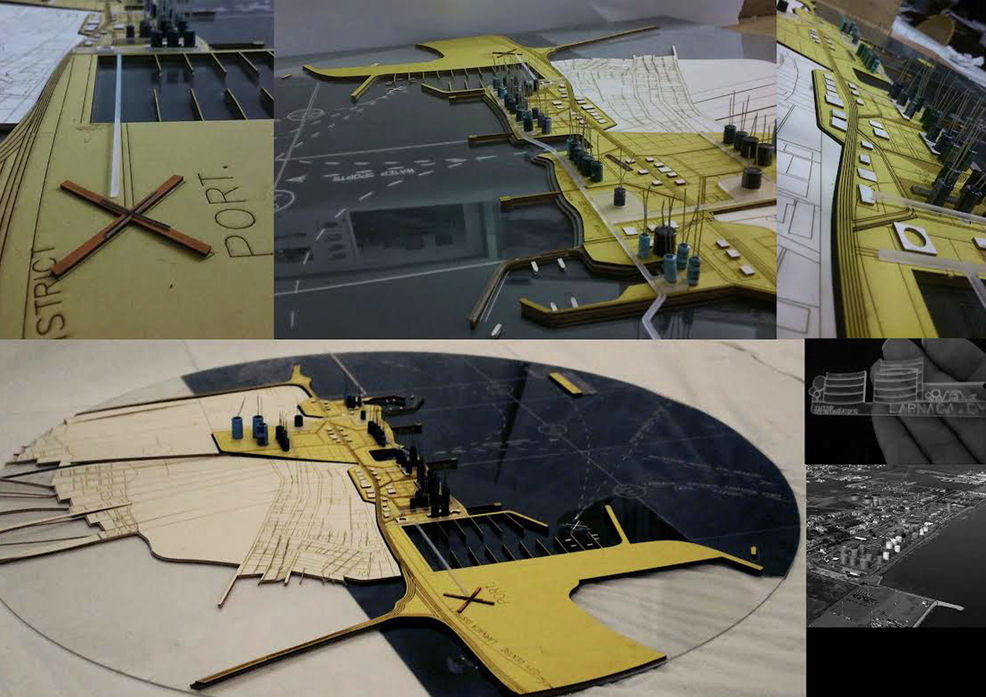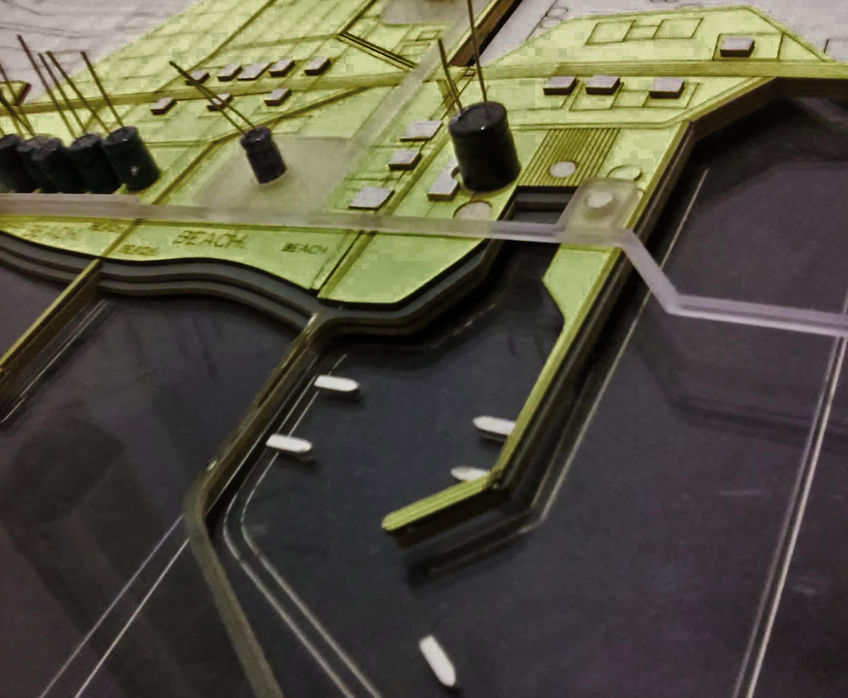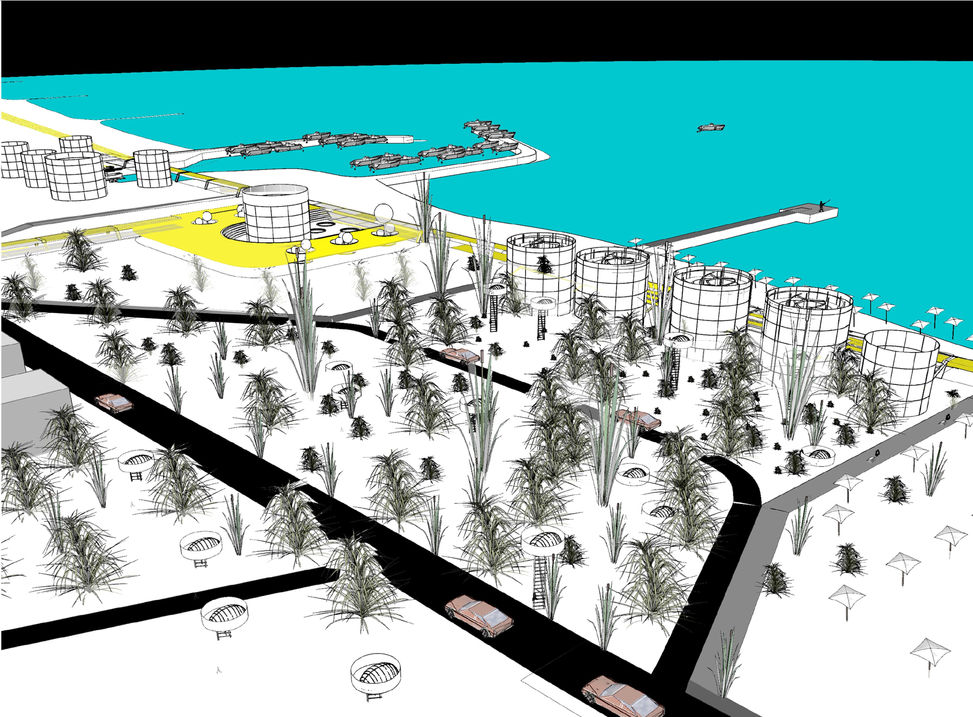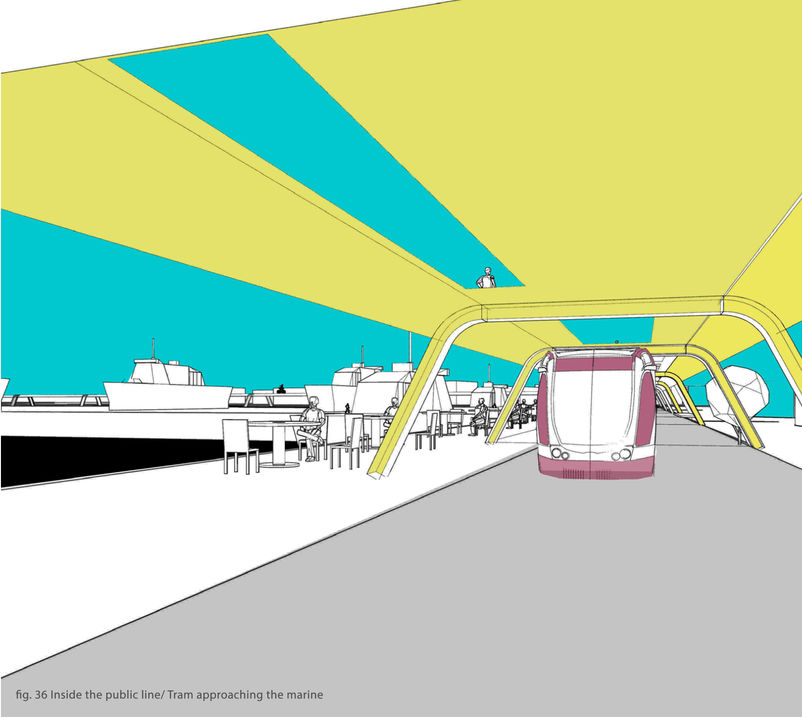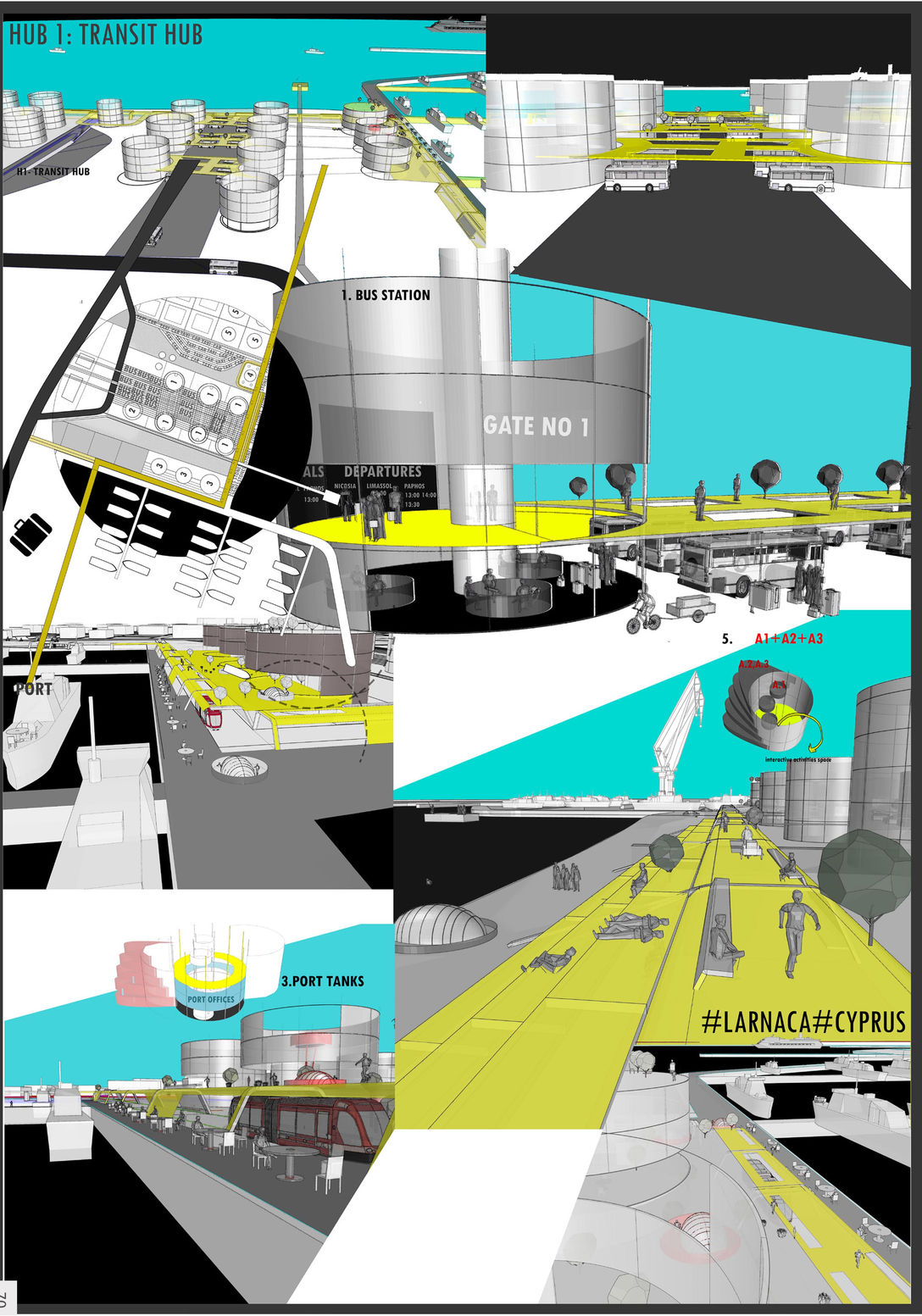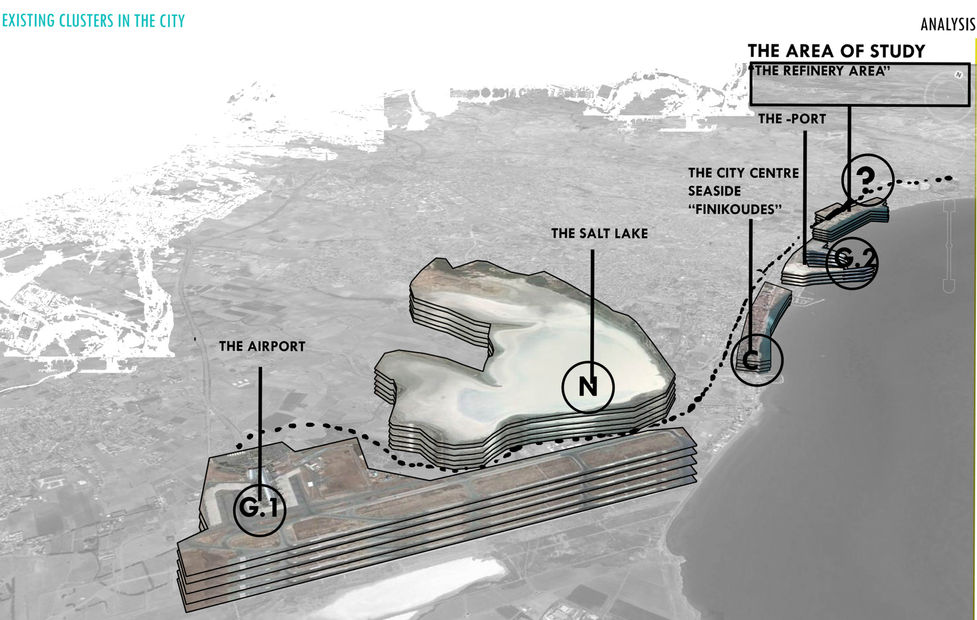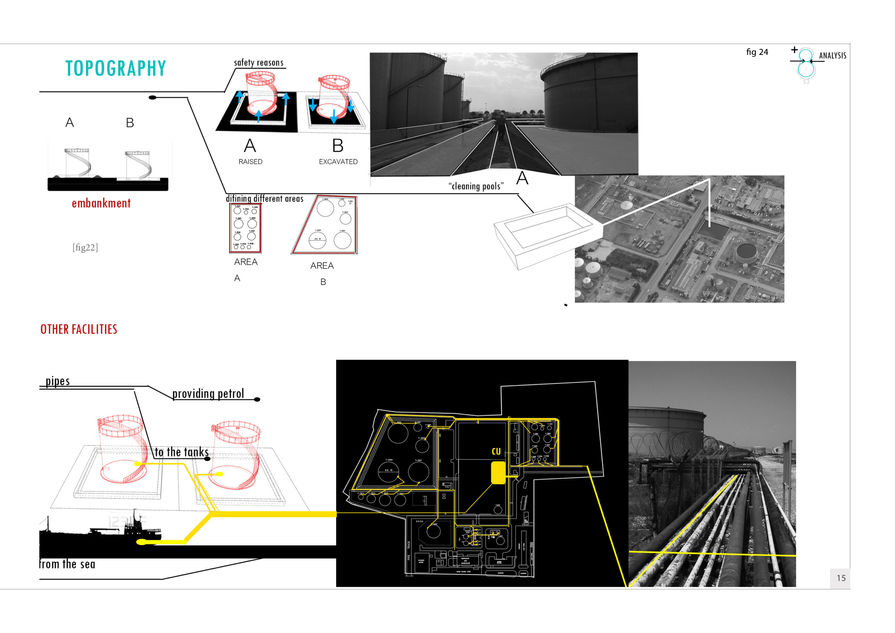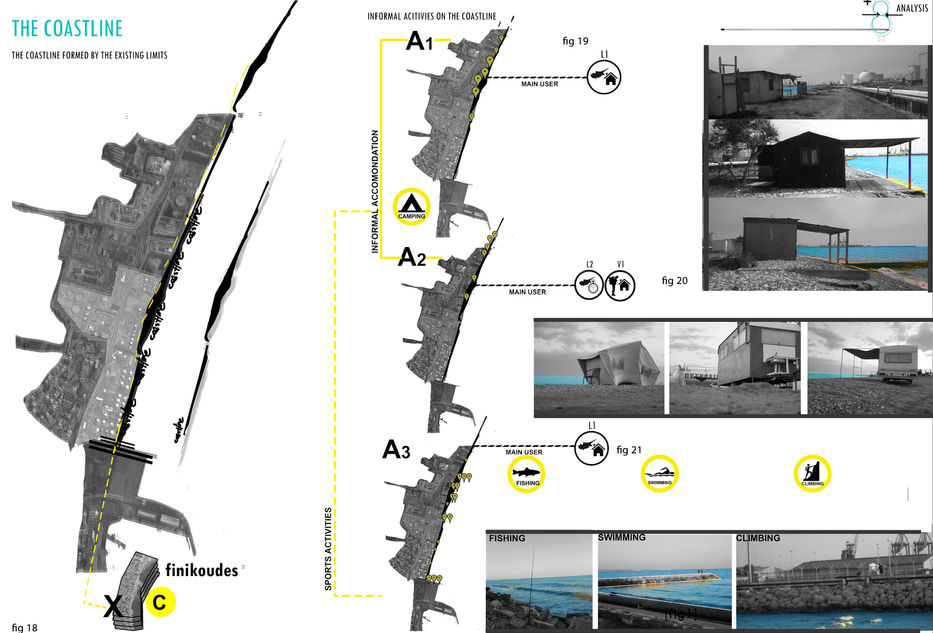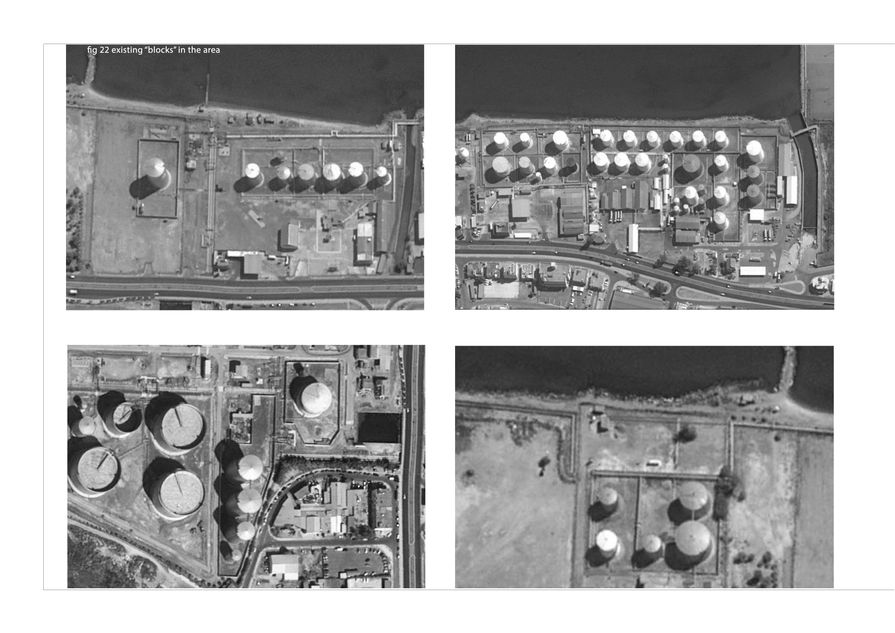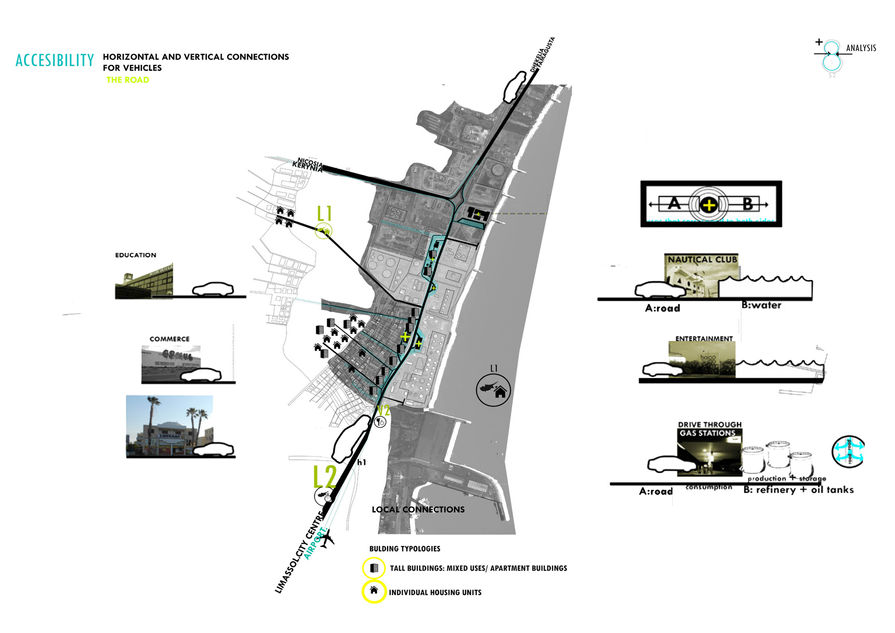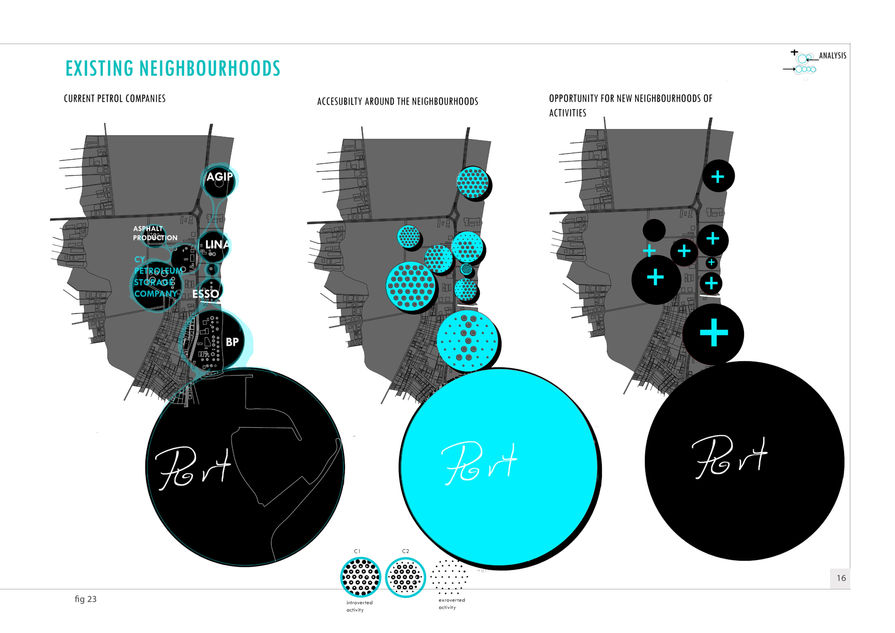
think tanks: Rethink Tourism./
Diploma thesis design proposal.
2014
Cyprus//University of Cyprus
Tutors// Pyla Panagiota, Stratis Socrates, Nadia Charalambous
Individual project.
This diploma thesis simultaneously examines two basic issues. On the one hand it investigates the possibilities for the revival of an industrial wasteland (ex-refinery area in Larnaca, Cyprus); on the other hand it focuses in the meaning and the possibilities of concept of “tourism”.
The area of study is of significant importance regarding to tourism, resulting to the opportunity for further investigation of the term. Starting from the smaller scale, it becomes clear that the area of study creates a strong spatial relationship with its future neighbour: the port terminal. This relationship has given motivation for discussion around the subject from the locals, resulting to proposals which aim to bring “touristic development” to the area. As we move to larger scales, other ways of connection between the area and the subject of tourism are being emerged. The site, as an important part of the city, has the opportunity of creating strong relationships with the city, thus with the biggest airport of the country and finally, with the whole island which is being self-promoted as an ideal “sea, sun, sand” destination.
1st PRIZE: CY-ARCH website, student awards
Urban Design projects
3rd PRIZE: Best Diploma projects in the Deparment of Architecture, University of Cyprus
URBAN DESIGN
active tourism, strategy, rehabilitation, Industrial area, locality, hubs of activities, refineries, Mediterranean island effect
How can this abandoned, non-place, disconnected from the city area to become a livable part of the urban fabric all year round?
Aiming to answer to these questions, this research also redefines the term “tourist”. The tourist and the local are reconceptualized as “visitors” who share and inhabit the same space in different periods of time.
The general strategy of the project, is to make interventions on different scales (from the building scale to the city scale) in order to achieve the mixture of different types of users and break the division between the “local” and the “tourist” the “city and the “wasteland”.
The area scale(M) is considered as the most important(and the largest) part of both, the analysis and the designing interventions of the project. In this scale, recognizes three basic elements of the site which currently act independently. These elements are: the road, the area of the existing infrastructure and the sea.
As the starting point of the designing interventions is the proposal of maintaining the existing infrastructure(hence maintaining the entire region as a landmark) and the creation of four hubs of multiple activities. Each hub, intends to cause an interaction between the visitors, by different activities.
The main uses proposed in the hubs are either related to activities which already take place in the site or offer infrastructures/activities currently missing from the city of Larnaca and create connections to the existing local networks.

After analyzing the current users/uses of the area and the city, the following hubs are proposed: transit hub, farming and agriculture hub, public green/energy hub and fishing hub.
Subsequently, a series of designing proposals in order to achieve erosion between the hubs and the three independent elements are being made.
For the erosion between the four hubs, some networks of uses(accommodation network) or networks of access(public line) are proposed to diffuse the uses: between the hubs(in the area scale) , between the city and the area of intervention(in larger scale). The erosion between the three elements is achieved by managing the speed of the road with “the loops” either side of the road, the creation of vertical connections (road-to-water lines), and the entrance of the water in three scales.
Finally, some basic typologies of buildings are being proposed and examined on how they succeed in the creation of new daily-routine relationships between the users and eventually the achievement of creating a common ground between the tourist and the local.















